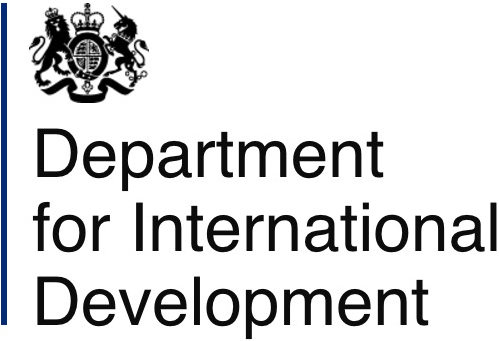Definition
Iron deficiency occurs when the body doesn't have enough of the mineral iron. This leads to abnormally low levels of red blood cells. Lower than normal haemoglobin levels indicate anaemia.Data

Notes
Source
National Department of Health, Statistics South Africa, South African Medical Research Council and ICF (2017) South African Demographic & Health Survey 2016: Key Indicators. Pretoria and Rockville, Maryland: NDOH, Stats SA, SAMRC & ICF. Analysis by Winnie Sambu.
What do the numbers tell us?
Early childhood is a period of rapid growth with a high demand for micronutrients (vitamins and minerals) such as zinc, iron and vitamin A. Inadequate nutrient intake causes micronutrient deficiency, which has negative effects for children given that micronutrients are crucial for healthy growth and development. For example, zinc plays an important role in brain functioning, and inadequate intake can cause poor cognitive development. Iron deficiency affects motor and cognitive development in children younger than 4 years.1 Vitamin A deficiency causes illness, can cause visual impairment and increases the risk for mortality.2
In South Africa, the main forms of micronutrient deficiencies that affect children are vitamin A, iron and zinc deficiencies. However, because data on the prevalence of micronutrient deficiencies is not regularly collected at national and regional levels, it is difficult to monitor prevalence and trends. A national survey conducted in 2012, the South Africa Health and Nutrition Examination Survey (SANHANES), estimated vitamin A deficiency among children under five years at 44%, with the deficiency rates higher among boys (49%) than girls (39%).3
A global analysis of vitamin A deficiency in 138 low- and middle-income countries estimated that 1.7% of deaths among children under five years in 2013 could be attributed to vitamin A deficiency.4 To prevent micronutrient deficiencies, South Africa introduced a national food fortification programme in 2003 which requires all maize and wheat products to be fortified with vitamins and minerals. The government has also been running a national vitamin A supplementation programme since 2002, to combat vitamin A deficiency and reduce the mortality risk in young children.5 In 2017/2018, 54% of children aged 12 – 59 months received vitamin A supplementation.6
The prevalence of anaemia among young children is also high. The 2016 South African Demographic Health Survey classified 61% of children under five years as anaemic. A quarter (24%) suffer from mild anaemia while 35% are moderately anaemic and 2% are severely anaemic. Anaemia rates are higher among poor children; 35% of those in the poorest wealth quintile were moderately anaemic, compared to 18% in the top quintile. The anaemia estimates reported here are significantly higher than those reported in previous national surveys. There is no clear reason for this and so these estimates must be treated with caution.7
There are no recent national level estimates on zinc deficiency. The 2005 National Food Fortification Baseline Survey found that 44% of children aged 1 – 9 years had inadequate zinc status and were therefore at risk of zinc deficiency.8 Some recent studies, although with small sample sizes, have found a high prevalence of zinc deficiency. One such study, involving 349 children from a rural area of Limpopo province, found that 43% of the children were found to be zinc deficient.9
1 Black RE, Victora CG, Walker SP, Bhutta ZA, Christian P, De Onis M, Ezzati M, Grantham-Mcgregor S, Katz J, Martorell R & Uauy R (2013) Maternal and child undernutrition and overweight in low-income and middle-income countries. The Lancet, 382(9890): 427-451.
2 Black et al (2013), above.
3 Shisana O, Labadarios D, Rehle T, Simbayi L, Zuma K, Dhansay A, Reddy P, Parker W, Hoosain E, Naidoo P, Hongoro C, Mchiza Z, Steyn NP, Dwane N, Makoae M, Maluleke T, Ramlagan S, Zungu N, Evans MG, Jacobs L, Faber M, & SANHANES-1 Team (2013) South African Health and Nutrition Examination Survey (SANHANES-1). Cape Town: HSRC Press.
4 Stevens GA, Bennett JE, Hennocq Q, Lu Y, De-Regil LM, Rogers L, Danaei G, Li G, White RA, Flaxman SR, Oehrle SP, Finucane MM, Guerrero R, Bhutta ZA, Then-Paulino A, Fawzi W, Black RE & Ezzat M (2015) Trends and mortality effects of vitamin A deficiency in children in 138 low-income and middle-income countries between 1991 and 2013: A pooled analysis of population-based survey. The Lancet Global Health, 3(9): e528–e536. doi: 10.1016/S2214-109X(15)00039-X.
5 Imdad A, Yakoob MY, Sudfeld C, Haider BA, Black RE & Bhutta ZA(2011) Impact of vitamin A supplementation on infant and childhood mortality, BMC Public Health, 11(3): 1-15.
Mayo-Wilson E, Imdad A, Herzer K, Yakoob MY, Bhutta ZA.. (2011) Vitamin A supplements for preventing mortality, illness, and blindness in children aged under 5: Systematic review and meta-analysis. BMJ (Online), 343(7822): 1-19.
6 Health Systems Trust (2019) District Health Barometer. Durban: Health Systems Trust. Full tables viewed 10 October 2019: https://www.hst.org.za/publications/Pages/HSTDistrictHealthBarometer.aspx
7 Department of Health, Statistics South Africa, South African Medical Research Council and ICF (2017) South African Demographic & Health Survey 2016: Key Indicators. Pretoria and Rockville, Maryland: DOH, Stats SA, SAMRC & ICF. Analysis by Winnie Sambu.
8 Labadarios D, Swart R, Maunder EMW, Kruger HS, Gericke GJ, Kuzwayo PMN, Ntsie PR, Steyn NP, Schloss I, Dhansay MA, Jooste PL, Dannhauser A, Nel JH, Molefe D & Kotze TJvW (2008) Executive summary of the National Food Consumption Survey Fortification Baseline (NFCS-FB-I) South Africa, 2005. South African Journal of Clinical Nutrition, 21(3 Suppl 2): 245-300.
9 Motadi SA, Mbhenyane XG, Mbhatsani HV, Mabapa NS & Mamabolo RL (2015) Prevalence of iron and zinc deficiencies among preschool children ages 3 to 5y in Vhembe district, Limpopo province, South Africa. Nutrition, 31(3): 452-458.
In South Africa, the main forms of micronutrient deficiencies that affect children are vitamin A, iron and zinc deficiencies. However, because data on the prevalence of micronutrient deficiencies is not regularly collected at national and regional levels, it is difficult to monitor prevalence and trends. A national survey conducted in 2012, the South Africa Health and Nutrition Examination Survey (SANHANES), estimated vitamin A deficiency among children under five years at 44%, with the deficiency rates higher among boys (49%) than girls (39%).3
A global analysis of vitamin A deficiency in 138 low- and middle-income countries estimated that 1.7% of deaths among children under five years in 2013 could be attributed to vitamin A deficiency.4 To prevent micronutrient deficiencies, South Africa introduced a national food fortification programme in 2003 which requires all maize and wheat products to be fortified with vitamins and minerals. The government has also been running a national vitamin A supplementation programme since 2002, to combat vitamin A deficiency and reduce the mortality risk in young children.5 In 2017/2018, 54% of children aged 12 – 59 months received vitamin A supplementation.6
The prevalence of anaemia among young children is also high. The 2016 South African Demographic Health Survey classified 61% of children under five years as anaemic. A quarter (24%) suffer from mild anaemia while 35% are moderately anaemic and 2% are severely anaemic. Anaemia rates are higher among poor children; 35% of those in the poorest wealth quintile were moderately anaemic, compared to 18% in the top quintile. The anaemia estimates reported here are significantly higher than those reported in previous national surveys. There is no clear reason for this and so these estimates must be treated with caution.7
There are no recent national level estimates on zinc deficiency. The 2005 National Food Fortification Baseline Survey found that 44% of children aged 1 – 9 years had inadequate zinc status and were therefore at risk of zinc deficiency.8 Some recent studies, although with small sample sizes, have found a high prevalence of zinc deficiency. One such study, involving 349 children from a rural area of Limpopo province, found that 43% of the children were found to be zinc deficient.9
1 Black RE, Victora CG, Walker SP, Bhutta ZA, Christian P, De Onis M, Ezzati M, Grantham-Mcgregor S, Katz J, Martorell R & Uauy R (2013) Maternal and child undernutrition and overweight in low-income and middle-income countries. The Lancet, 382(9890): 427-451.
2 Black et al (2013), above.
3 Shisana O, Labadarios D, Rehle T, Simbayi L, Zuma K, Dhansay A, Reddy P, Parker W, Hoosain E, Naidoo P, Hongoro C, Mchiza Z, Steyn NP, Dwane N, Makoae M, Maluleke T, Ramlagan S, Zungu N, Evans MG, Jacobs L, Faber M, & SANHANES-1 Team (2013) South African Health and Nutrition Examination Survey (SANHANES-1). Cape Town: HSRC Press.
4 Stevens GA, Bennett JE, Hennocq Q, Lu Y, De-Regil LM, Rogers L, Danaei G, Li G, White RA, Flaxman SR, Oehrle SP, Finucane MM, Guerrero R, Bhutta ZA, Then-Paulino A, Fawzi W, Black RE & Ezzat M (2015) Trends and mortality effects of vitamin A deficiency in children in 138 low-income and middle-income countries between 1991 and 2013: A pooled analysis of population-based survey. The Lancet Global Health, 3(9): e528–e536. doi: 10.1016/S2214-109X(15)00039-X.
5 Imdad A, Yakoob MY, Sudfeld C, Haider BA, Black RE & Bhutta ZA(2011) Impact of vitamin A supplementation on infant and childhood mortality, BMC Public Health, 11(3): 1-15.
Mayo-Wilson E, Imdad A, Herzer K, Yakoob MY, Bhutta ZA.. (2011) Vitamin A supplements for preventing mortality, illness, and blindness in children aged under 5: Systematic review and meta-analysis. BMJ (Online), 343(7822): 1-19.
6 Health Systems Trust (2019) District Health Barometer. Durban: Health Systems Trust. Full tables viewed 10 October 2019: https://www.hst.org.za/publications/Pages/HSTDistrictHealthBarometer.aspx
7 Department of Health, Statistics South Africa, South African Medical Research Council and ICF (2017) South African Demographic & Health Survey 2016: Key Indicators. Pretoria and Rockville, Maryland: DOH, Stats SA, SAMRC & ICF. Analysis by Winnie Sambu.
8 Labadarios D, Swart R, Maunder EMW, Kruger HS, Gericke GJ, Kuzwayo PMN, Ntsie PR, Steyn NP, Schloss I, Dhansay MA, Jooste PL, Dannhauser A, Nel JH, Molefe D & Kotze TJvW (2008) Executive summary of the National Food Consumption Survey Fortification Baseline (NFCS-FB-I) South Africa, 2005. South African Journal of Clinical Nutrition, 21(3 Suppl 2): 245-300.
9 Motadi SA, Mbhenyane XG, Mbhatsani HV, Mabapa NS & Mamabolo RL (2015) Prevalence of iron and zinc deficiencies among preschool children ages 3 to 5y in Vhembe district, Limpopo province, South Africa. Nutrition, 31(3): 452-458.






 The SAECR 2024 tracks trends on the status of children under 6.
The SAECR 2024 tracks trends on the status of children under 6. 








